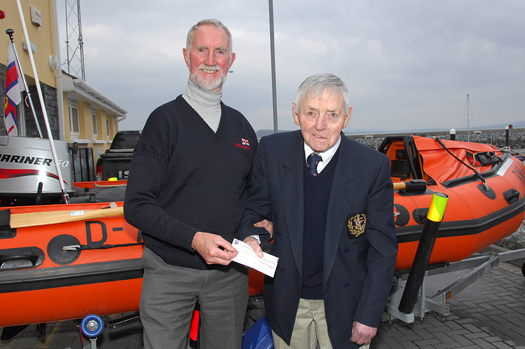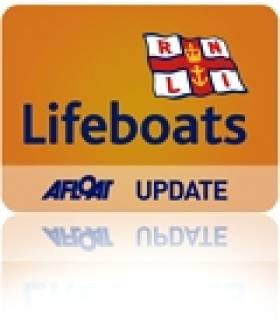Displaying items by tag: Charlie McGibney
Charlie McGibney 1928 – 2014
#rip – The sea, once it casts its spell, will hold you in the net of its wonder forever. A thought that left Dublin native Charlie McGibney spellbound for his 85 years. From a very young age and through all his journeys taken over sea and land throughout his long, distinguished and caring life, Charlie took his final journey this week after he peacefully passed away at his home in Tieraclea, Tarbert, County Kerry on February 13 last.
Born in 1928 and originally from Inchicore, Mr McGibney developed and harnessed his interest and love for the sea over many years culminating in stewardship roles with many of the countries national sailing classes and associations.
Through sailing and the his maritime links and bonds, Mr McGibney is fondly remembered throughout the community, both far and wide with the esteem his presence would hold.
A founder member and former Commodore of Tarbert Island Maritime Club, Mr McGibney held a position of governor of RNLI together with a secretariat role for the Topper International Class Association.
A regional race officer with the Irish Sailing Association, Mr McGibney was very much involved with the Mermaid Class Association. A former commodore and member of Foynes Yacht Club as well as Tralee Bay Sailing Club, the avid boat builder was never far from the sea, even in his later years at his Tarbert home.
Co owner of the class winning Dehler Optima 101 yacht 'Disaray' on Ireland's west coast, Mr McGibney was also a member of the West of Ireland Off Shore Racing Association (WIORA) of which his son Simon is Commodore. He was also involved with and a member of the historic Royal Western Yacht Club of Ireland.
Most notably in 2005, aged 77, the able seaman and mariner was the leader of the assault to the Scottish Sailing Series - Tarbert to Tarbert with three generations involved.
At 85 and the beloved husband of the late Ita, Charlie McGibney peacefully passed away leaving behind a wide circle of family and friends. He is survived by daughter Carol; sons, Thomas, George, Gerard, John Raymond, Damien, Rory and Simon, inlaews, grand children and great children.
It is to the land he may lay, but it is to the sea he will look as Mr McGibney's final resting place is at St Mary's New Cemetery following requiem mass at the adjoining church in Tarbert.
Donations, if desired to the RNLI.
Ar dheis de go raibh an anam.
Donations Vital for RNLI Service
Charlie McGibney (pictured below) presented a cheque recently to David Buttimer, chairman of the Fenit RNLI lifeboat fund-raising committee, for donations received at the funeral of his loving wife Ita McGibney.
It was Ita's request that donations made during her funeral be presented by her husband Charlie to Fenit RNLI Lifeboat Station, based at Fenit Harbour in Co Kerry.
The RNLI (Royal National Lifeboat Institution) is a registered charity and depends on voluntary donations and legacies to maintain its rescue service.
The death of Ita McGibney (neé Clonan) of Tieraclea Park, Tarbert and formerly of Dumcondra, Dublin, occurred on 20 February 20 2011. Ita is survived by her husband Charlie; sons Tom, George, Gerard, John, Raymond, Damien, Rory and Simon; daughter Dr Carol (Pierce); brother Pat; sisters Mary and Ann; as well as in-laws, grandchildren, great-grandchildren, nephews, nieces and friends.

Photograph by Digimac Photography, Fenit































































